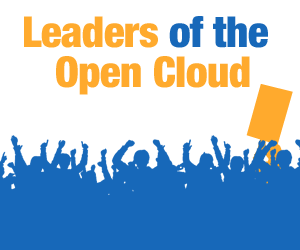To seasoned software standards expert Angel Diaz, today’s effort to create interoperability in the cloud is reminiscent of the mid-90s when HTTP emerged as a state-of-the-art technology. Every application server had to do that same function but there was no standard, he said. And so IBM helped create Apache web server software and the standard code for building web pages.
 “We want that same phenomenon to occur in the cloud,” said Diaz, vice president of software standards and cloud at IBM. “That’s why IBM is one of the pioneering sponsors of the OpenStack Foundation.
“We want that same phenomenon to occur in the cloud,” said Diaz, vice president of software standards and cloud at IBM. “That’s why IBM is one of the pioneering sponsors of the OpenStack Foundation.
“We’re kind of hoping that, similar to the way Apache and Linux happened, we’ll be able to create a common code base to drive true interoperability, and then we’ll differentiate.”
But standards creation has also changed significantly in the past 15 or 20 years, Diaz said. End users, or clients, are much more involved and there’s a bigger emphasis on code-driven standards and reference implementations. There’s an expectation that clients’ needs are well understood and the solutions are well architected.
Here are three projects that Diaz highlighted as having a key role in standards creation for the open cloud. He also added that conferences such as CloudOpen, happening this week in San Diego, are an opportunity to bridge some of these divides and bring players from various levels of the cloud together for discussion and collaboration.
“The sharing that goes on in a conference like CloudOpen is very good,” Diaz said. “We hope everyone comes together around these concepts.”
1. OpenStack
The OpenStack project has a “huge” user committee that feeds use cases to the open source development community, Diaz said. The vendors came in to help fund the foundation and build an infrastructure that supports innovation but they don’t carry an outsized influence in the governance process, he said.
“They are the most user-centric open source cloud right now,” Diaz said.
2. The Cloud Standards Customer Council
The council has also been involved in standards creation from the user perspective. The coalition of about 360 end users and vendors, including State Street and Etna, has written eight different use cases on Iaas and Paas, as well as an SLA (Service Level Agreement) guide and practical guide to cloud computing that’s been very well received, Diaz said. The council has now turned its attention to security standards for the cloud.

IBM is listening to its own clients as well, who say they’re operating in a heterogeneous data center environment. They need to use and extend existing systems and they don’t want to be locked into a single-vendor solution.
“That is how IBM defines an open cloud: It’s where end users want to have these points of interoperability,” Diaz said.
3.TOSCA Committee (Topology and Orchestration Specification for Cloud Applications)
Beyond the basic cloud infrastructure, interoperability standards must be created for managing workloads and dev-ops.
As a member of the TOSCA hybrid cloud standards committee along with Cisco, Red Hat and others, IBM aims to prevent vendor lock-in at the workload level. The committee, organized by the nonprofit OASIS (Organization for the Advancement of Structured Information Standards), expects to have a draft specification and open source implementation ready by the end of the year, Diaz said.

